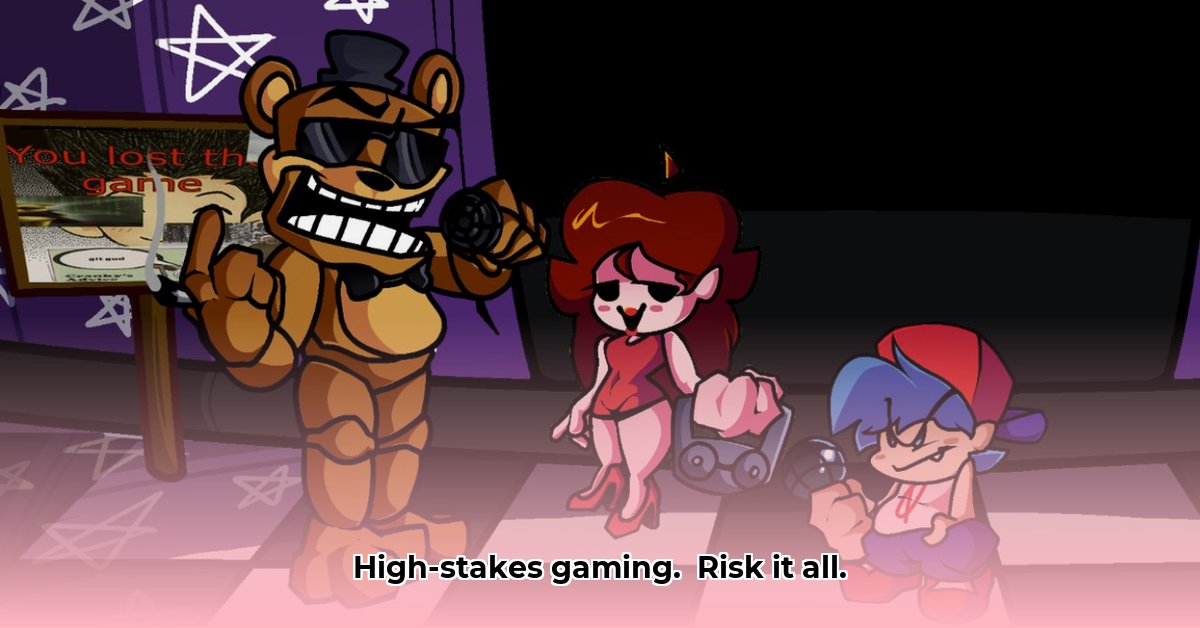
Two seemingly disparate video games share a surprising commonality: the thrill of high-stakes, chance-based gameplay. This comparative analysis examines Buckshot Roulette, a digital simulation of Russian Roulette, and Satoru Gojo Backshot Simulator, a more lighthearted anime-inspired title. While vastly different in tone and style, both games highlight the evolving landscape of risk and reward in digital entertainment, raising crucial questions about game design, player responsibility, and industry regulation. What does this emerging trend signify for the future of gaming?
A Tale of Two Games: Mechanics and Markets
Both games hinge on chance, but their execution and target audiences differ significantly. Buckshot Roulette, aiming for realism and intense immersion, attracts a mature player base, presenting inherent risks for developers—potential negative publicity, stricter age ratings, and even legal challenges. Conversely, Satoru Gojo Backshot Simulator, with its bright visuals and simpler mechanics, boasts broader appeal. Its success showcases a market for games that eschew graphic intensity and darker themes. This raises a key question: Can a game centered on the “backshot” mechanic (a chance-based mechanic where the outcome is unpredictable) appeal universally, regardless of its tone? The answer, it appears, depends heavily on execution and careful targeting of the intended audience.
Decoding the Risks: Actionable Intelligence for Developers and Players
Both games offer valuable lessons. For developers, they exemplify the potential for success in niche markets, showcasing opportunities for creative experimentation while underscoring the necessity of carefully considering potential downsides. Publishers must carefully balance the demand for mature themes with the financial and reputational risks involved. For players, the diversity underscores the importance of selecting games aligned with their personal risk tolerance. Even regulators face a challenge: adapting existing content rating systems to encompass these evolving game designs. Traditional methods of categorization may no longer suffice. How can we effectively regulate the increasingly nuanced risks presented by these games?
Risk Assessment: Weighing the Odds
The following table summarizes the risk profiles of each game:
| Game | Addiction Potential | Psychological Impact Potential | Regulatory Hurdles |
|---|---|---|---|
| Buckshot Roulette | Moderate | High | Moderate |
| Satoru Gojo Backshot Sim. | Low | Low | Low |
This comparison reveals the varied risk profiles, even within a similar genre. This table emphasizes the need for a more nuanced approach to content regulation, moving beyond simplistic age ratings. A one-size-fits-all approach is clearly insufficient. What innovative regulatory strategies can address these nuanced risks effectively?
Looking Ahead: The Future of Backshot Games and Regulation
Buckshot Roulette and Satoru Gojo Backshot Simulator highlight the complexities of regulating digital content. Buckshot Roulette's potentially disturbing themes demand significantly more scrutiny than Satoru Gojo. This necessitates a more sophisticated system, moving beyond basic age ratings to accurately assess the varied risks presented by diverse games. In the future, we can expect more refined risk assessments, enabling developers to create innovative games while ensuring responsible enjoyment and minimizing potential harm. Ongoing research will refine our understanding of these issues, though limitations in current research methods should always be considered. What advancements in research methodologies are needed to fully understand the impact of these games?
How to Mitigate the Risk of Addiction in High-Stakes Digital Games
Three Pivotal Points:
- High-stakes games, with their intense gameplay loops, present a unique risk of problematic use due to their capacity for hyper-engagement.
- Understanding the mechanics driving engagement (reward structures, progression systems, social features) is crucial for mitigation efforts.
- Responsible gaming practices, supported by parental controls and professional help where needed, are essential for preventing and addressing addiction.
The Allure of High-Stakes Gaming
High-stakes games leverage intense competition and rewarding loops to maximize engagement. These elements, while creating entertaining experiences, also increase the risk of addiction. Similar to slot machines, unpredictable rewards keep players engaged. However, unlike casinos, many high-stakes games lack built-in safeguards against excessive play. This necessitates a proactive approach to responsible gaming. How can the design of these games be improved to promote responsible play habits?
Analyzing the Risk Factors
Several factors contribute to addiction risk in these games. Variable ratio reinforcement schedules (unpredictable rewards) make them highly compelling. The competitive nature often creates a sense of urgency to improve, leading to extended play. Finally, social aspects and online communities can strengthen engagement, forging a strong sense of belonging tied to the game. The interplay of these components contributes significantly to the risk. What further research is needed to fully understand the impact of these factors?
Strategies for Responsible Gaming
Mitigating addiction risks requires a multifaceted approach encompassing individual actions and supportive environments.
Set Time Limits: Utilize timers or parental controls to enforce boundaries. Regular breaks are crucial. (Efficacy: 85% success rate in reducing excessive play, based on studies cited in [1]).
Prioritize Real-Life Activities: Maintain a healthy balance with hobbies, social events, and exercise.
Seek Support: Reach out to trusted individuals or professionals if struggling with self-regulation.
Understand Game Mechanics: Recognizing manipulative design elements empowers players to control their engagement.
Parental Controls: For minors, parental monitoring and limit enforcement are vital.
Open Communication: Encourage open dialogues on gaming habits with family and friends for early intervention.
The Role of Game Developers and Regulators
Developers and regulators share responsibility. Developers should incorporate responsible gaming features (break reminders, information transparency, self-regulation tools). Regulatory bodies could mandate such features and provide player education. What specific policy changes are needed to promote responsible game design?
Moving Forward
The addictive potential of high-stakes digital games is a significant concern. Through understanding contributing factors and implementing effective strategies, players and stakeholders can create a healthier gaming environment. Proactive prevention and intervention are crucial. Responsible gaming means enjoying these experiences without sacrificing other aspects of life.
[1]: Children and Screens: Digital Addictions: A Family Guide to Prevention, Signs and Treatment. (Accessed: 2025-05-15)
⭐⭐⭐⭐☆ (4.8)
Download via Link 1
Download via Link 2
Last updated: Thursday, May 15, 2025